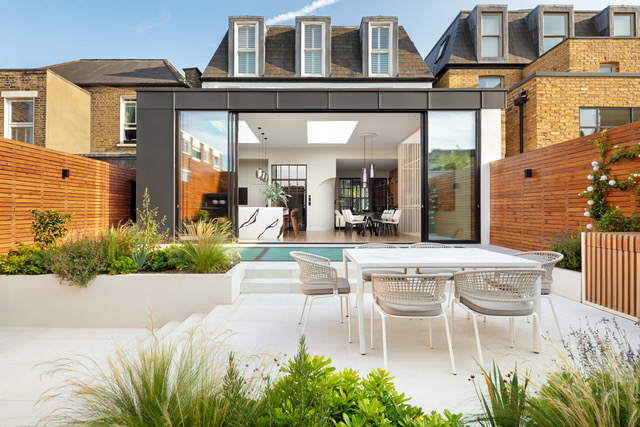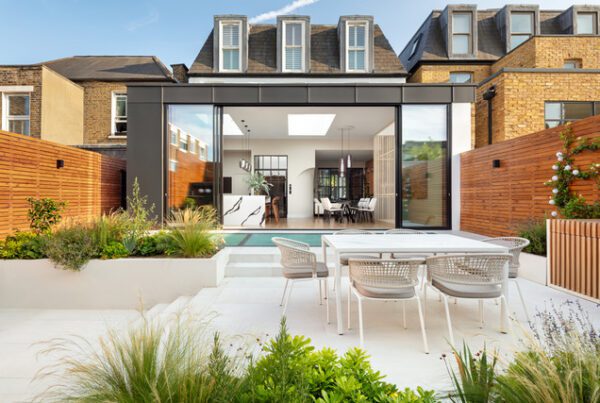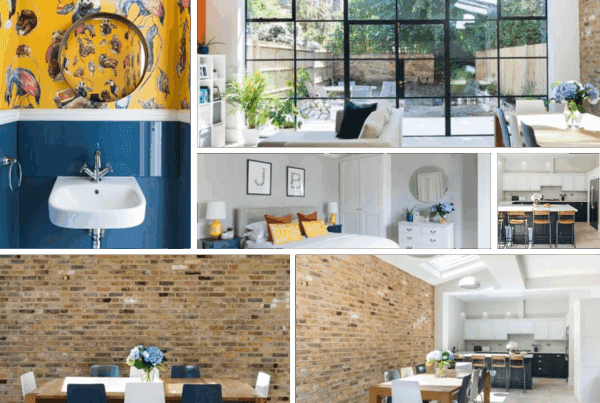It all started one chilly morning when she found herself sitting in her living room, staring out the window at the world outside. The house had served as a place to sleep, eat, and rest, but something was missing. There was no warmth, no soul to the space. Sure, it was a beautiful house with clean lines and modern finishes, but it lacked something deeper—it wasn’t quite her yet. It didn’t feel like home.
As she sat in her favorite armchair, sipping coffee, she realized the answer: it was time to turn this house into a home—one that truly reflected her values, lifestyle, and personality. Inspired by 2025 design trends, she decided it was time to infuse her space with meaning and function. Here’s the journey she took to transform her house into a home, with the top design trends for 2025 shaping the way.
1. Sustainable Design: Creating a Home That Gives Back
Sustainability had always been at the core of her values, but she’d never quite realized how much of a difference it could make to her home. One day, while browsing through design magazines, she came across a home that was not only beautiful but also eco-friendly. It sparked an idea—what if her home could be both stylish and sustainable?
She started small, replacing her old appliances with energy-efficient models, and then moved on to bigger changes like installing solar panels on the roof and choosing recycled materials for her new kitchen countertops. In the living room, she laid down bamboo flooring, knowing it would not only look great but would be a more sustainable choice.
As the changes started taking shape, she realized her home had become more than just a space to live. It was now a reflection of her values—a place where sustainability wasn’t just an afterthought but the foundation of everything she did.
Why It’s Worth It: Choosing sustainable materials and energy-efficient systems didn’t just reduce her environmental footprint—it also saved her money in the long run. She was investing in both her home and the planet.
2. Smart Home Technology: Convenience Meets Innovation
As she made her way through the transformation, another idea emerged. If she was going to make her home more personal and functional, why not make it smarter? Smart home technology wasn’t just a trend—it was an opportunity to make her life easier, more efficient, and more connected.
She started with smart thermostats, allowing her to control the temperature from her phone while she was on her way home. Voice-activated assistants made it easy to adjust the lighting, play music, or even order groceries. But the pièce de résistance was the smart security system she installed, which provided real-time updates and allowed her to monitor her home from anywhere, even when she was traveling.
With the push of a button, her home had evolved from a traditional space to a tech-savvy, efficient haven that worked for her every day.
Why It’s Worth It: Smart home upgrades offered the perfect balance of convenience, comfort, and energy savings. The house was now more secure, efficient, and personalized—a home that truly understood her needs.
3. Biophilic Design: A Connection to Nature
As the renovations continued, she realized there was another element missing—nature. She’d always found peace walking through forests or sitting in a park. The calm of nature had always grounded her, and she knew her home should offer that same feeling.
So, she embraced biophilic design, which was all about connecting her living space with the outdoors. She started with large windows, allowing natural light to flood in and offering uninterrupted views of the garden. She added indoor plants—from towering fiddle-leaf figs to small succulents on windowsills—creating a lush, green atmosphere throughout the house.
The kitchen now had reclaimed wood counters, and she selected stone tiles for the bathroom. The textures, the materials, and the plants all came together to create a calm, soothing environment.
Why It’s Worth It: Biophilic design not only improved the visual appeal of her home but also brought a sense of peace and calm into her life. She felt more connected to nature and noticed how her mental health improved as a result.
4. Open-Concept Living: Spaces That Evolve with You
While the renovation was going well, she wanted to make her home more dynamic—able to change as her life did. She envisioned a living space that could transform depending on the moment. After all, her life was constantly evolving—whether she was working from home, hosting friends for a dinner party, or simply enjoying some alone time.
Her solution? Multifunctional, open-concept spaces. The once-static living room was now a place that could serve as a home office, a dining area, and a relaxation zone, all within the same walls. She added movable partitions to create privacy when needed and embraced modular furniture that could be rearranged depending on the day’s activities.
Why It’s Worth It: This new flexible layout allowed her home to adapt to her needs. No longer confined to rigid spaces, her home was multidimensional—perfect for any lifestyle.
5. Bold Colors and Statement Pieces: Design with Personality
As the finishing touches were added, she knew it was time to bring out her boldness. The neutral tones that filled the walls had been practical, but now she needed something that felt alive. Her vision was to make each room express her style and story.
She started with a deep emerald green accent wall in the living room, followed by a bright mustard yellow armchair that immediately became a focal point. Custom artwork from her travels, handpicked lighting fixtures, and unique furniture pieces filled the space with vibrancy and character.
This was more than just decoration. It was her expression, her personality shining through.
Why It’s Worth It: Bold colors and statement pieces allowed her home to feel authentic. Each item told a story, reflecting the journey she had taken to make the space truly hers. Her home was now a place that felt alive and uniquely her own.
Conclusion: Creating a Home That Reflects You
As she stood in the middle of her newly transformed home, she felt a deep sense of pride. It was no longer just a house—it was a home. Every choice she made, from sustainable materials to bold design choices, had been driven by a desire to make the space reflect who she was.
Turning a house into a home isn’t just about aesthetics; it’s about creating a space that fits your needs, expresses your values, and feels like your sanctuary. Whether you’re drawn to sustainable design, want to incorporate smart technology, or just want to make a statement with bold colors, the choices you make can truly transform your living space.
It’s time to start your own journey. With the design trends of 2025, you can turn your house into a home—a place that fits your lifestyle, reflects your personality, and helps you live in comfort and style.




